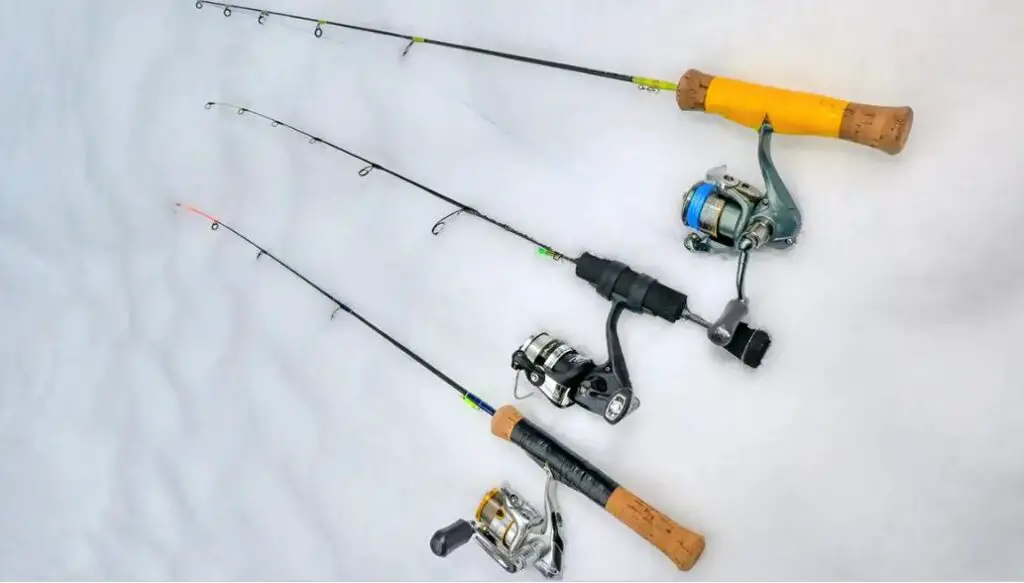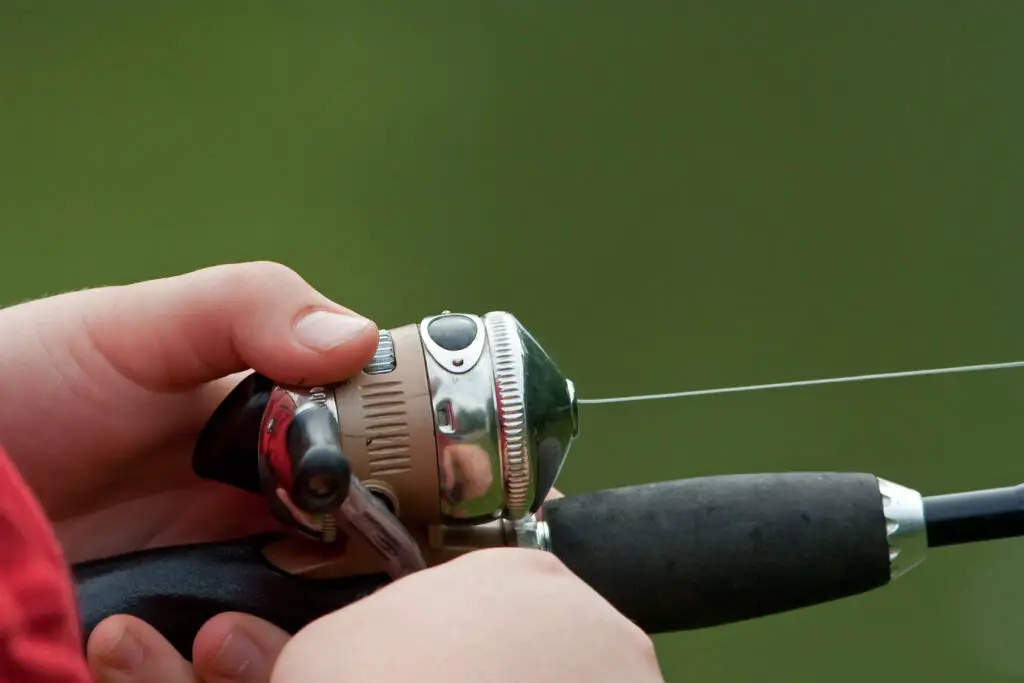Welcome to our comprehensive guide on fishing rod roller guides. If you’re an avid angler looking to improve your fishing experience, roller guides can play a crucial role. These innovative components offer several advantages over traditional guides, enhancing the performance and durability of your fishing rod. In this article, we’ll explore the benefits of fishing rod roller guides, their different types, maintenance tips, and more. So, let’s dive in and discover how these roller guides can revolutionize your angling pursuits!
What are Fishing Rod Roller Guides?
fishing rod roller guides are specialized components designed to facilitate the smooth passage of fishing line during casting and retrieval. Unlike traditional guides that use a stationary ceramic insert, roller guides feature a revolving mechanism, reducing friction and minimizing line wear. The rollers, typically made of durable materials such as stainless steel or ceramic, allow the fishing line to glide effortlessly, enabling longer casts and enhanced sensitivity.
Why Choose Fishing Rod Roller Guides?
When it comes to selecting the ideal guides for your fishing rod, roller guides offer numerous benefits that make them a popular choice among anglers. Here are some compelling reasons to consider using fishing rod roller guides:

Reduced Friction
Roller guides minimize line friction, preventing heat buildup and reducing line wear. This ensures smoother casting and retrieval, ultimately improving your overall angling performance.
Increased Casting Distance
The low friction offered by roller guides enables longer casts, allowing you to reach distant fishing spots with ease. This can be especially advantageous when targeting elusive species or fishing in larger bodies of water.
Enhanced Sensitivity:
Roller guides enhance sensitivity by reducing line drag, allowing you to detect even the slightest nibble. This heightened sensitivity increases your chances of detecting bites and improving your hook-set ratio.
Durability
Roller guides are designed to withstand the demands of rigorous fishing activities. With their robust construction and high-quality materials, they offer excellent durability, ensuring they can handle heavy line weights and challenging angling situations.
Types of Fishing Rod Roller Guides
There are various types of fishing rod roller guides available, each designed to suit specific angling needs

Single Roller Guides
These roller guides feature a single roller mechanism and are often found on lighter fishing rods. They provide smooth line flow and are suitable for light to medium-weight lines.
Double Roller Guides
Double roller guides consist of two rollers positioned side by side. This design offers increased stability and is commonly found on medium to heavy-duty fishing rods.
Triple Roller Guides
Triple roller guides feature three rollers, providing even greater stability and line control. They are commonly used on heavy-duty rods designed for handling large game fish.
Ball-Bearing Roller Guides
Ball-bearing roller guides utilize ball bearings in the roller mechanism, further reducing friction and ensuring silky-smooth line flow. These guides are known for their exceptional performance and are often found on high-end fishing rods.
It’s important to choose the type of roller guide that aligns with your fishing style, target species, and the type of fishing rod you use. Consider your specific requirements and consult with experts or experienced anglers to make an informed decision.
Advantages of Roller Guides for Anglers
Using fishing rod roller guides provides anglers with several distinct advantages. Let’s take a closer look at the benefits these guides offer:
Smooth Line Flow
Roller guides minimize friction, enabling your fishing line to flow smoothly. This reduces tangles and allows for more precise casting and retrieval.
Increased Casting Distance
By reducing line friction, roller guides help maximize casting distance. Anglers can reach farther distances, giving them access to more productive fishing areas.
Improved Line Protection
The revolving mechanism of roller guides minimizes line wear and prevents damage. This ensures that your fishing line remains in optimal condition, reducing the need for frequent line replacements.
Enhanced Sensitivity
Roller guides enhance sensitivity by reducing line drag. This allows anglers to detect even the slightest nibble or movement, improving their ability to react quickly and make accurate hook sets.
Versatility
Fishing rod roller guides are suitable for a wide range of fishing styles and techniques. Whether you’re casting lures, trolling, or bottom fishing, roller guides can accommodate various angling methods.
By utilizing fishing rod roller guides, you can significantly enhance your angling experience and increase your chances of success on the water.
Maintaining and Cleaning Roller Guides
Proper maintenance and cleaning of your fishing rod roller guides are crucial for optimal performance and longevity. Here are some essential tips to keep your roller guides in excellent condition:
Regular Inspection
Periodically inspect your roller guides for any signs of wear, damage, or corrosion
Cleaning
Remove dirt, debris, and saltwater residue from your roller guides after each fishing trip. Gently rinse them with freshwater and wipe them dry using a soft cloth.
Lubrication
Apply a small amount of reel oil or lubricant to the roller mechanism, ensuring smooth rotation. Be careful not to over-lubricate, as excess oil can attract dirt and grime.
Protecting Against Corrosion
If you fish in saltwater environments, consider using a corrosion inhibitor or reel grease on the roller guides to protect them from saltwater damage.
Tips for Choosing the Right Fishing Rod Roller Guides
Selecting the right fishing rod roller guides can significantly impact your angling performance. Here are some key factors to consider when choosing roller guides for your fishing rod:

- Fishing Rod Type: Consider the type of fishing rod you own and its intended use. Different roller guides are designed to accommodate specific rod types, such as spinning rods, casting rods, or fly rods.
- Line Weight and Diameter: Ensure that the roller guides you choose can handle the line weight and diameter you typically use. Heavy-duty roller guides are required for heavier lines, while lighter guides work best with lighter lines.
- Fishing Style and Target Species: Your fishing style and target species play a crucial role in guide selection. For example, if you primarily target large saltwater game fish, you’ll need robust roller guides capable of handling heavy lines and intense fights.
- Quality and Durability: Invest in roller guides made from high-quality materials, such as stainless steel or ceramic, for maximum durability. High-quality guides may be slightly more expensive initially, but they offer better longevity and performance.
- Brand Reputation: Choose roller guides from reputable brands known for their quality and reliability. Research customer reviews and seek recommendations from experienced anglers or fishing forums.
Considering these factors will help you select roller guides that are compatible with your fishing rod and suited to your angling needs.
Fishing Rod Roller Guides vs. Traditional Guides
fishing rod roller guides offer several advantages over traditional guides. While traditional guides are still widely used, roller guides have gained popularity due to their superior performance. Let’s compare the two:
- Reduced Friction: Roller guides have a revolving mechanism that reduces line friction, while traditional guides have a stationary ceramic insert. The reduced friction in roller guides provides smoother line flow and better casting distance.
- Line Protection: Traditional guides can cause line wear and damage over time, especially when using heavier lines. Roller guides, on the other hand, minimize line wear due to their low-friction design.
- Handling Heavy Lines: Roller guides are better equipped to handle heavy lines, making them suitable for targeting larger species. Traditional guides may struggle to accommodate heavy lines, leading to increased friction and reduced casting distance.
- Sensitivity: Roller guides offer enhanced sensitivity by reducing line drag. This allows anglers to detect subtle bites and movements more easily compared to traditional guides..
While traditional guides have their advantages and are suitable for certain angling scenarios, roller guides provide superior performance, durability, and line protection
Enhancing Casting Distance with Roller Guides
One of the significant benefits of fishing rod roller guides is their ability to enhance casting distance. By reducing line friction and offering smooth line flow, roller guides allow anglers to cast farther and reach otherwise inaccessible areas. Here are some tips to maximize your casting distance using roller guides:
- Optimal Line Capacity: Ensure that your fishing reel has sufficient line capacity to accommodate longer casts. Spool your reel with the appropriate amount of line, considering the target species and fishing conditions.
- Proper Line Spooling: Correctly spooling your fishing line on the reel is essential for optimal casting distance. Avoid overfilling or underfilling the reel, as it can affect line flow and casting performance. Follow the manufacturer’s guidelines for line spooling.
- Smooth Casting Motion: Practice a smooth and controlled casting motion to minimize line friction and maximize distance. Avoid sudden jerks or excessive force during the cast, as it can negatively impact casting distance.
- Adjusting Drag Settings: Set your reel’s drag system appropriately for the line weight and target species. A well-adjusted drag system ensures optimal line release during casting, contributing to increased casting distance.
By implementing these tips and utilizing fishing rod roller guides, you can significantly improve your casting distance, expand your fishing range, and increase your chances of landing that prized catch.
Maximizing Sensitivity and Hook Sets
Enhanced sensitivity and precise hook sets are crucial for successful angling. fishing rod roller guides can contribute to both aspects, allowing you to detect subtle nibbles and improve your hook-set ratio. Here’s how you can maximize sensitivity and hook sets using roller guides:

- Quality Roller Guides: Invest in high-quality roller guides that provide minimal line drag and smooth line flow. Roller guides made from materials such as stainless steel or ceramic offer excellent sensitivity and reduced friction.
- Proper Line Tension: Maintain proper tension on your fishing line while fishing. Excessive line tension can impede sensitivity and make it harder to detect bites. Adjust the tension according to the fishing conditions and target species.
- Responsive Rod: Pair your roller guides with a responsive fishing rod that offers excellent sensitivity. A sensitive rod will transmit even the slightest vibrations or movements to your hand, improving your ability to detect bites.
- Sharp Hooks: Ensure that your fishing hooks are sharp and in good condition. Sharp hooks increase the chances of a successful hook set, preventing fish from escaping.
- Practice and Experience: Regular practice and experience play a significant role in maximizing sensitivity and hook sets. Spend time on the water, learn the nuances of different fish species, and fine-tune your angling skills.
By combining roller guides with proper line tension, a responsive rod, sharp hooks, and experience, you can significantly enhance sensitivity, detect more bites, and improve your hook-set success rate.
Handling Larger Fish with Ease
fishing rod roller guides excel at handling larger fish due to their robust construction and smooth line flow. When targeting species known for their strength and size, roller guides provide several advantages. Here’s how they help anglers handle larger fish with ease:
- Line Protection: Roller guides minimize line wear and damage when fighting large fish. The revolving mechanism ensures that the line glides smoothly through the guides, reducing the risk of friction-related breakages.
- Enhanced Durability: Roller guides are designed to handle heavy line weights and intense fights. They are constructed using durable materials that can withstand the pressure exerted by larger fish species.
- Improved Line Control: Roller guides offer better line control and stability, allowing anglers to maneuver larger fish more effectively. The reduced friction and smooth line flow ensure a secure connection between the angler and the fish.
- Smooth Retrieval: When reeling in a large fish, roller guides ensure a smooth retrieval process. The revolving mechanism minimizes line drag, making it easier to reel in heavyweights.
Understanding Roller Guide Materials
Roller guides are available in different materials, each offering distinct advantages. Understanding these materials will help you make an informed decision when selecting roller guides for your fishing rod. Here are some common roller guide materials:
- Stainless Steel: Stainless steel roller guides are highly durable, corrosion-resistant, and suitable for various fishing environments. They provide excellent line flow and are a popular choice for anglers.
- Ceramic: Ceramic roller guides are known for their exceptional smoothness and reduced line wear. They are lightweight, offer excellent sensitivity, and provide consistent performance.
- Titanium: Titanium roller guides are incredibly lightweight, corrosion-resistant, and exceptionally strong. They are popular among anglers targeting large saltwater game fish.
- Aluminum: Aluminum roller guides offer a balance between strength and weight. They are relatively lightweight, corrosion-resistant, and suitable for various fishing applications.
Each material has its own set of advantages, so consider your fishing style, target species, and fishing conditions when choosing the roller guide material that best suits your needs.
Installing Roller Guides on Your Fishing Rod
Installing roller guides on your fishing rod is a relatively straightforward process that can be done at home with the right tools and guidance. Here’s a step-by-step guide to installing roller guides:
- Gather the Necessary Tools: To install roller guides, you’ll need a rod-building kit, which typically includes a rod wrapper, rod dryer, epoxy adhesive, thread, and a variety of roller guides.
- Remove Existing Guides: If your rod already has guides installed, carefully remove them using a guide removal tool or a razor blade. Take your time to avoid damaging the rod blank.
- Prep the Rod Blank: Clean the rod blank thoroughly to remove any debris or residue. Smooth any rough spots or sharp edges with sandpaper.
- Position the Roller Guides: Determine the ideal placement of the roller guides on your fishing rod. The number and spacing of the guides may vary depending on the rod length and type. Refer to the rod-building kit instructions or consult rod-building resources for guidance.
- Wrap the Guides: Use the rod wrapper to wrap thread around the base of each guide, securing them to the rod blank. Follow the specific wrapping pattern recommended by the rod-building kit instructions.
- Apply Epoxy Adhesive: Once the guides are wrapped in place, apply epoxy adhesive over the thread wraps. Ensure that the adhesive covers the wraps completely for a secure and durable bond.
- Cure the Epoxy: Place the rod in a rod dryer, allowing the epoxy to cure according to the manufacturer’s instructions. This ensures a strong and long-lasting bond.
- Finalize Guide Alignment: After the epoxy has cured, check the alignment of the roller guides. Make any necessary adjustments to ensure that they are straight and properly aligned.
By following these steps and taking your time, you can successfully install roller guides on your fishing rod and enjoy the benefits they provide.
Fishing Rod Roller Guides FAQs
Fishing rod roller guides are specialized guides designed to facilitate smooth line flow and reduce friction when casting and retrieving fishing lines. They consist of a revolving mechanism with one or more rollers, providing improved line control and reduced wear on the fishing line.
Roller guides are important for anglers because they offer several advantages. They provide smoother line flow, increased casting distance, improved line protection, enhanced sensitivity, and versatility for various fishing styles.
Yes, roller guides can be used for different types of fishing rods, including spinning rods, casting rods, and fly rods. However, it’s important to choose roller guides that are compatible with the specific fishing rod type and intended use.
Roller guides enhance casting distance by minimizing line friction and ensuring smooth line flow. With reduced friction, anglers can achieve longer and more accurate casts, reaching areas that would otherwise be inaccessible.
Maintaining and cleaning fishing rod roller guides is essential for optimal performance and longevity. Regularly inspect the guides for wear or damage, clean them with freshwater after each fishing trip, lubricate the roller mechanism, and protect against corrosion, especially in saltwater environments.
Common materials used for roller guides include stainless steel, ceramic, titanium, and aluminum. Each material offers its own advantages in terms of durability, smoothness, weight, and corrosion resistance.


